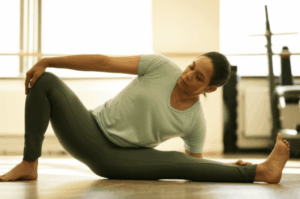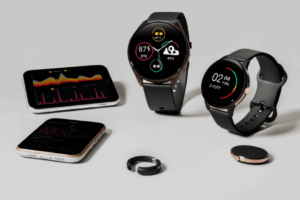For individuals managing blood sugar levels, whether due to diabetes or other metabolic concerns, exercise is a cornerstone of a healthy lifestyle. But is there an optimal time of day to workout for the best results? Emerging research suggests that the timing of your exercise may significantly impact its effectiveness in controlling blood sugar. While any physical activity is beneficial, understanding the science behind when to exercise can help you maximize its effects on your blood glucose levels.
The Science Behind Exercise and Blood Sugar
Exercise is a powerful tool for managing blood sugar because it enhances the body’s sensitivity to insulin. When you exercise, your muscles use glucose for energy, which helps to lower blood sugar levels. This happens through both insulin-dependent and insulin-independent mechanisms. During activity, muscles contract, allowing cells to absorb glucose for energy, whether or not insulin is available. Furthermore, regular exercise results in sustained improvements in insulin sensitivity and glucose disposal. This effect can last for up to 24 hours or more after a workout.
How Different Types of Exercise Affect Blood Sugar
Both aerobic and resistance training are beneficial for blood sugar management. Aerobic exercises like brisk walking, swimming, and cycling increase insulin sensitivity and help lower blood glucose levels. Resistance training, which includes weightlifting and bodyweight exercises, improves strength, bone density, and muscle mass, further aiding in glucose regulation. High-intensity interval training (HIIT) is also effective and time-efficient, leading to rapid enhancements in insulin sensitivity and glycemic control.
It’s essential to understand that exercise can sometimes cause a temporary rise in blood sugar levels due to the release of stress hormones like adrenaline, particularly during high-intensity activities. This is why monitoring blood glucose before, during, and after exercise is crucial, especially for individuals with diabetes.
The Impact of Exercise Timing on Blood Sugar
Recent studies have begun to highlight the importance of exercise timing in regulating blood sugar. While exercise at any time of day is beneficial, research suggests that exercising later in the day might offer superior benefits for blood sugar control.
Morning Exercise: Benefits and Considerations
While morning exercise is undoubtedly good for overall health, some studies suggest it may not be as effective for blood sugar management as afternoon or evening workouts. Morning workouts, especially in a fasted state, might lead to less of a decrease or even a slight increase in blood glucose levels. This phenomenon is partly due to the “dawn phenomenon,” a natural rise in blood glucose that occurs in the early morning hours. However, some research indicates that morning exercise can improve overall 24-hour glucose levels and increase the use of stored carbohydrates and lipids. Additionally, morning exercise may be easier for some to fit into their daily routine, which can lead to better consistency and adherence.
Afternoon Exercise: A Sweet Spot for Blood Sugar
Exercising in the afternoon has shown promising results in several studies. A study published in Diabetologia in 2022 found that participants who exercised in the afternoon experienced an 18% reduction in insulin resistance. This suggests that the body may be more receptive to the glucose-lowering effects of exercise during this time. Another study found that moderate-to-vigorous exercise in the afternoon was associated with improved glucose control and a reduced risk of developing type 2 diabetes in pre-diabetic individuals. These findings align with the fact that the body’s insulin sensitivity tends to be higher in the afternoon due to the circadian rhythm, making exercise more effective in managing blood sugar.
Evening Exercise: Potentially the Most Effective
Recent research is increasingly pointing to evening exercise as the most effective for managing blood sugar. A study in Obesity found that individuals who did over 50% of their exercise in the evening had significantly lower glucose levels and better glucose regulation compared to those who exercised primarily in the morning or afternoon. Another study reported that evening workouts lowered overnight glucose levels. This is particularly important for individuals with type 2 diabetes, who often experience nocturnal spikes in glucose. Evening exercise can help flatten these spikes and improve overnight blood sugar control. The improved overnight glucose control achieved with evening exercise can also contribute to better fasting morning blood glucose levels, which are often a concern for people with type 2 diabetes. Additionally, a study in The Journal of Clinical Endocrinology & Metabolism found that blood glucose levels were lower after afternoon exercise compared to morning exercise. Furthermore, continuous glucose monitoring indicated more glucose variability and frequent hyperglycemia after morning resistance exercise than after afternoon resistance exercise.
Practical Recommendations for Exercise and Blood Sugar
While research suggests that afternoon and evening exercise might provide the most significant benefits for blood sugar control, the most important thing is to find a time that works best for your individual schedule and stick to a consistent routine.
Key Considerations:
- Consistency is key: Regular exercise, regardless of the time of day, is crucial for managing blood sugar. Aim for at least 150 minutes of moderate-intensity or 75 minutes of vigorous-intensity physical activity each week.
- Monitor your blood sugar: Checking your blood glucose levels before, during, and after exercise can help you understand how your body responds to activity at different times of the day.
- Consult with your healthcare provider: If you have diabetes or other health conditions, talk to your doctor about the best time to exercise for your specific needs. They may also advise on adjusting medication or meal plans around your workout schedule.
- Listen to your body: Pay attention to how your body feels at different times of the day and adjust your exercise schedule accordingly.
- Incorporate variety: Include a mix of aerobic, resistance, and flexibility exercises in your routine to maximize the benefits for your overall health.
- Exercise after meals: Exercising after meals, particularly after breakfast or lunch, can help manage post-meal sugar spikes. Even a short walk after eating can make a difference.
Types of exercise to consider:
- Aerobic Exercise: Brisk walking, jogging, swimming, cycling, dancing.
- Resistance training: Weightlifting, bodyweight exercises, using resistance bands.
- Flexibility exercises: Yoga, stretching.
Conclusion
The optimal time to exercise for healthy blood sugar may vary from person to person. While the existing body of research indicates that afternoon and evening workouts might offer the best results for managing insulin resistance and lowering glucose levels, any physical activity at any time of day is beneficial. The key is to find a routine that fits your lifestyle and allows you to stay consistent. By understanding how your body responds to exercise at different times of the day, you can optimize your workouts for better blood sugar control and overall health.







